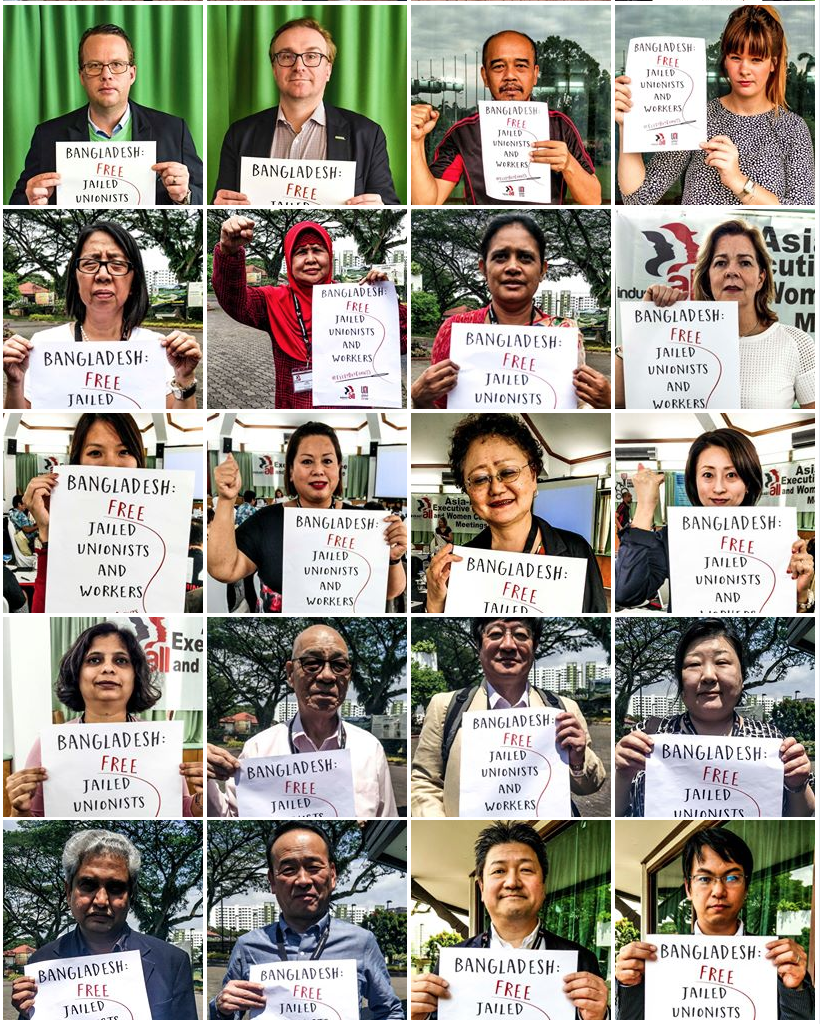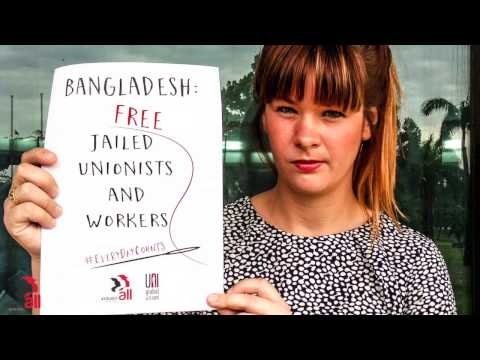2 March, 2017A behind the scenes look at a successful campaign. Bringing about social change is difficult, and clicktivism - signing an online petition - is not enough. So how do you campaign and win?
The issue
Textile and garment workers in Bangladesh are joining unions and fighting for better conditions. In December 2016, thousands went on strike for a higher minimum wage. 1,600 workers were fired, 35 trade unionists were arrested, others went into hiding, and trade union offices were closed.
IndustriALL and our sister global union UNI launched a campaign to end the crackdown. Yesterday, we had confirmation that we had been successful: the last trade unionist was released from prison, and our union affiliates in Bangladesh have been recognized as negotiating partners by the government and the employers’ association, the BGMEA.
How did we do it?
1. We had a backstory
We spent years raising awareness of conditions in Bangladesh, and building relationships with people working to improve things. We could quickly launch the campaign with a simple message.
2. Mobilized our base
We contacted our affiliated unions across the world and asked them to send letters of protest to the Bangladeshi government. We coordinated a day of action that saw union-organized protests outside Bangladeshi embassies in Berlin, Geneva, London, Brussels, The Hague, Washington D.C., New York, Ottawa, Kathmandu, and Seoul.
3. LabourStart campaign
We launched a campaign on LabourStart, the online petition site for the labour movement. More than 10,000 trade unionists around the world sent messages of protest to the Bangladeshi government.
4. Activated our network
We have built strong relationships with partner NGOs. We contacted organizations like the Clean Clothes Campaign and Fashion Revolution, who supported our campaign and shared it with their networks.
5. Gave people something to do
We engaged people by using social media to tell the story of the workers who make our clothes. We used easily shareable content with lots of images.
We produced a simple poster demanding the release of the trade unionists, and made it available to download. We asked people to take selfies of themselves holding the poster, and share it on social media with our campaign hashtag #EveryDayCounts. Hundreds of people posted images, which helped spread the message further.
6. Used positive alternatives
Our opponents characterized trade union protests as criminal and violent. We countered this with a positive alternative: two of our affiliates signed collective agreements with Bangladeshi garment employers during the period of the crackdown, showing that positive industrial relations are possible.
7. Used global framework agreements
We have spent years building relationships with major fashion brands that source from Bangladesh. We have signed global framework agreements with H&M, Inditex (ZARA), Tschibo and Mizuno. These agreements contain strong language that requires brands to take responsibility for their supply chain, and include a commitment to support collective bargaining.
Consumer activism means more and more people now care how their clothes were made: to stay competitive, brands need to show they care too. Major brands could not afford to be associated with a labour crackdown in Bangladesh. As a result, they announced they would not attend the crucial industry trade fair, the Dhaka Apparel Summit.
This was the last straw for the factory owners.
8. Established ourselves as partners
Unions make deals. We will need to work with the government and the employers’ federation in future to create a successful garment industry that provides quality jobs.
We created a situation where it would be costly for the government and employers to continue the crackdown, and made it clear we were in a position to escalate the campaign. Then we gave them a way out.
Union representatives on the ground, the IndustriALL Bangladesh Council, negotiated an agreement that saw the arrested trade unionists released. Commitments were made to offer dismissed workers their jobs back, and we established the precedent of the IBC being recognized as a partner for negotiations.
Conclusion
The two most important factor in our success were:
- Spending time to build relationships and trust beforehand, so that a lot of people could be mobilized quickly.
- Tackling the problem from different angles. With the Bangladeshi government receiving emails, letters and embassy protests, and brands refusing to attend the apparel summit, they felt pressure from all sides.
The campaign relied on relationships and networks. We played to our strengths (our networks), and targeted the employers’ weak points (reputational damage and the threat of lost business).









